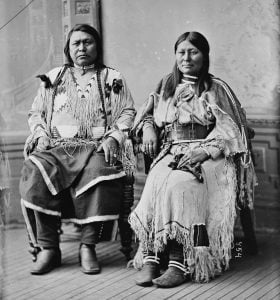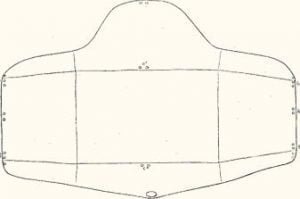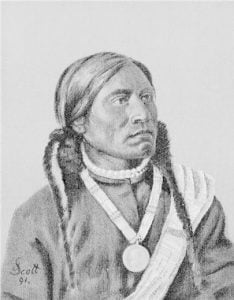Ouray, Chief of the Ute
The Ute seldom visited Colorado City and the region round about in the early days, except in the winter, which was the only time they could do so with a fair degree of safety. A majority of the tribe had been on friendly terms with the English-speaking people from the time of their earliest contact with that race. It is true that straggling bands of Ute occasionally committed acts of depredation, and such bands on one or two occasions killed white people, but these acts were not approved by the majority of the tribe. One of these exceptions occurred on Christmas … Read more






